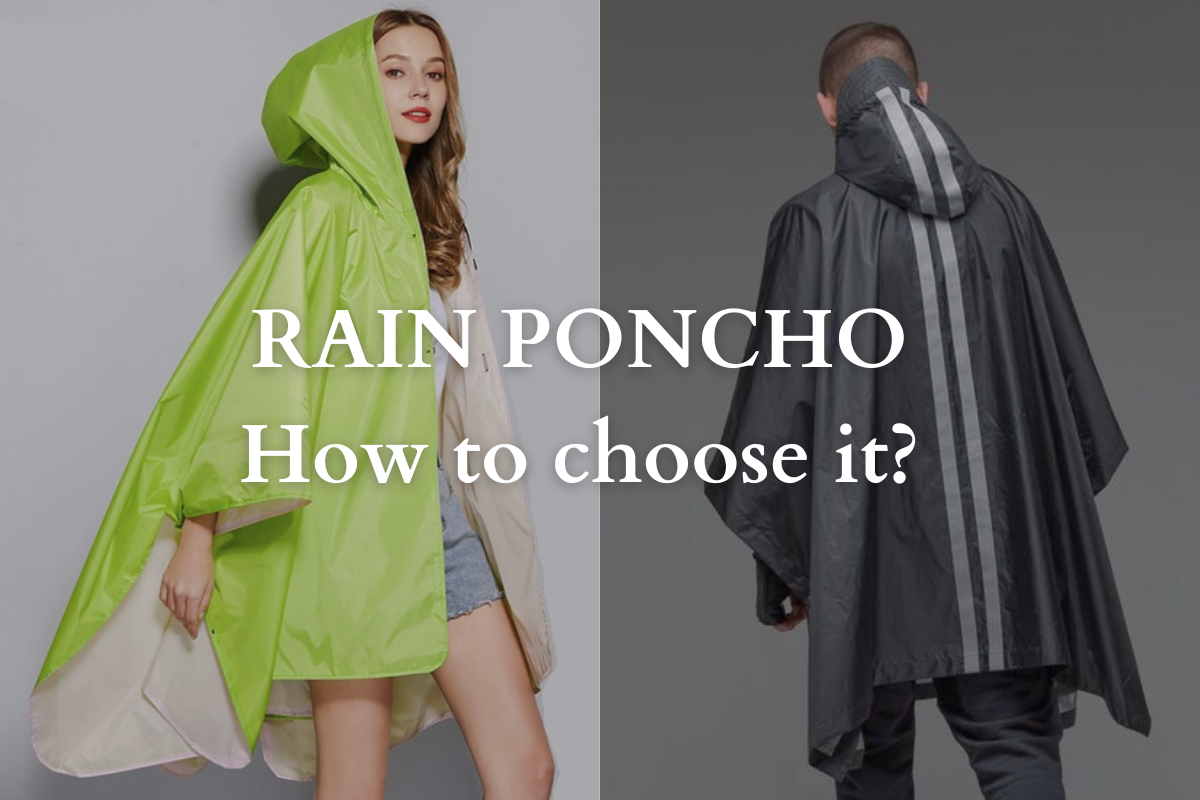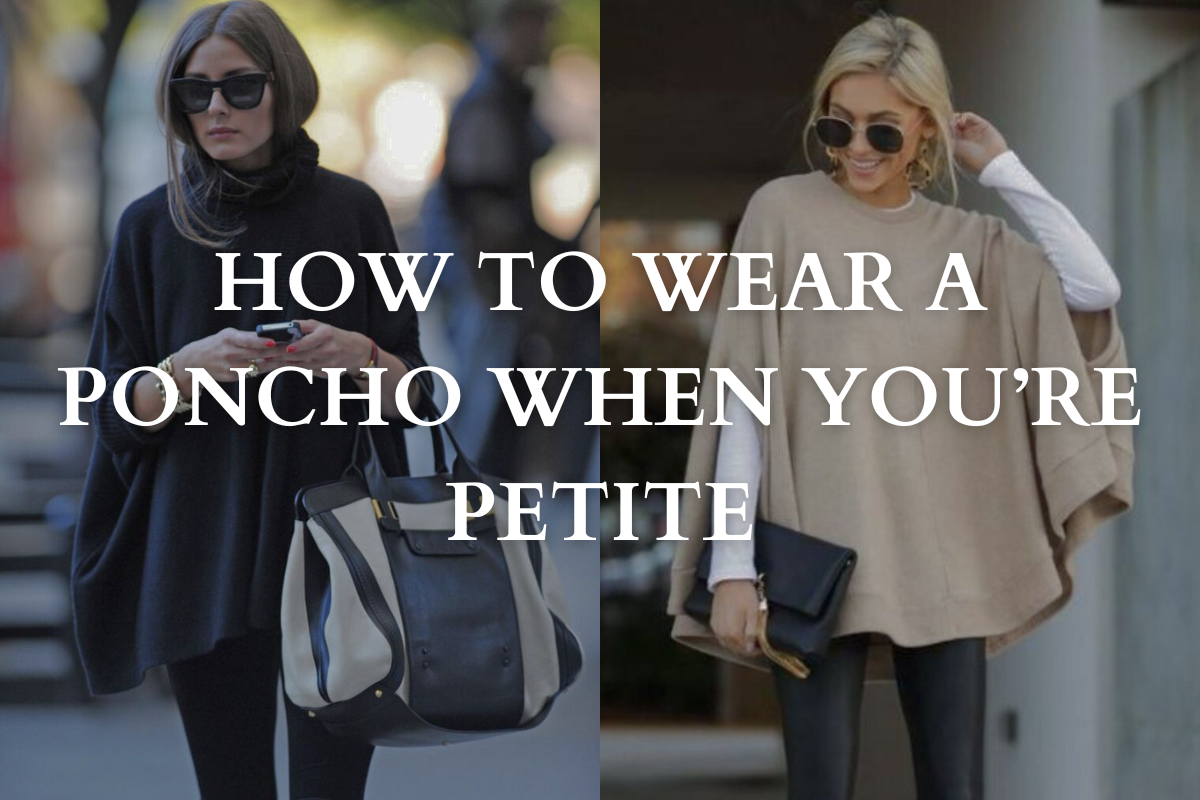Enjoy free shipping with no minimum purchase.
Article: How to Choose the Right Rain Poncho?

How to Choose the Right Rain Poncho?
Would you like to buy a rain poncho but don't know what criteria to base your choice on? Do you want to protect yourself from showers while you're riding your bike or simply strolling around town? Are you hiking and looking for a good rain cape that will keep you and your backpack dry? We specialize in poncho design and know exactly how to help you.
In this article you'll discover:
- The main criteria to consider when buying a rain poncho
- The many features a rain cape can offer you
- The advantages and disadvantages of a rain poncho
After reading this article, rain capes will no longer hold any secrets for you. You'll know exactly how to choose yours. Let's find out without further ado! 👇
What is a rain poncho?
First of all, let's ask ourselves what a rain poncho is.
The rain poncho or rain cape is initially a large square of waterproof fabric with a hole open at the top to let the head out. The poncho is designed to drape over the body and offer rain protection for the upper body and upper legs. Most ponchos also feature a hood to keep the head dry.
Poncho waterproofing
The most important criterion is undoubtedly the waterproofness of the rain poncho. Waterproofing is, by definition, the ability of a fabric to prevent water penetration.
Most ponchos are made from polyester or nylon, which, once treated, cannot be impregnated by water or any other fluid. What you're looking for in a rain cape, then, is a waterproof or waterproof accessory that prevents water from seeping underneath and keeps you dry. So be sure to check out the waterproof qualities of a rain poncho before buying one.
Poncho breathability
The other criterion to take into account is the poncho's breathability. By definition, breathability is a fabric's ability to evacuate water vapor.
A breathable fabric facilitates the evacuation of perspiration and keeps the body dry. If you put on a non-breathable garment, you run the risk of being drenched by your own perspiration. The breathability of a fabric avoids this "sauna effect" under your clothes.
The advantage of a rain poncho, as opposed to a rain jacket, is that its breathability is accentuated by its loose-fitting cut and side openings closed by snap fasteners. This creates a draught to facilitate better ventilation and the evacuation of perspiration.
To sum up, a rain poncho has a waterproof outer membrane to keep water out and, depending on the poncho, a breathable inner membrane to wick perspiration away. A rain cape therefore offers a good balance between waterproofing and breathability.
Practicality of the poncho
Generally sleeveless, a poncho is much easier to put on than a rain jacket. This is particularly advantageous when you're hiking. The quicker you can put on your rain cape when it starts raining, the greater the chance of not getting wet and keeping your backpack dry.
Another advantage of the poncho, which makes it even more practical, is that unlike an umbrella, which you have to hold with at least one hand, the poncho allows you to keep both hands free. This means you can protect yourself from showers while carrying on with activities that require the use of both hands, such as riding your bike for cyclists, carrying shopping bags or pushing your baby's stroller in the rain!
The surface covered by the poncho
Most ponchos cover the entire upper body, reaching down to mid-thigh or to the knees. So you don't need to wear waterproof pants as well.
If you're hiking, the rain poncho is long enough to cover and protect your backpack from the elements.
It's worth noting that there are also ponchos with long sleeves for better arm protection against the rain.
Poncho transportability
If you're looking for rainwear that's lightweight, compact and easy to carry, look no further than the rain poncho! Unlike umbrellas, which take up a lot of space if they're long, rain capes are easier to carry, fold easily and often come with a storage pouch for easy transport. So you can take your poncho with you wherever you go, slipping it into your handbag, backpack or bicycle basket, and get it out quickly when the first gray clouds start to show their face.
Other rain cape features
Zippers
Some rain ponchos close at the front with a zipper. This allows them to be worn a bit like a jacket: open or closed, depending on your mood (and the weather). This zipper opening also makes them easier to put on than head-on. Snaps on the sides usually accompany this type of poncho to ensure, as we've seen, better breathability.
Hood with visor
Most ponchos have a hood to protect the head from the rain, but there are also ponchos with hood and visor for easier vision when it's raining. Don't forget to opt for hoods with drawstrings for extra protection from the rain and easier adjustment.
Pockets
There's nothing more practical than a rain jacket to keep your hands free and store a few personal items. Many ponchos feature zipped pockets, from a central or kangaroo pocket on the front to two pockets on the sides. These pockets keep your cell phone or wallet dry. A criterion to take into account when choosing a rain poncho!
For even greater protection of your belongings, some pockets feature a "zipper hut" or " zipper garage ", nothing more than an extra piece of fabric above the zipper to prevent any raindrops from entering the pocket.
Reflective strips
For cyclists or even pedestrians strolling in the rain as night falls, it's vital to opt for a poncho with reflective stripes to ensure your safety.
There are ponchos with reflective strips specially designed for bicycles, so you'll be visible at night.
2-in-1 rain cape
This type of 2-in-1 rain poncho is made for hiking enthusiasts! These ponchos can be converted into a shelter (tent) or a tarpaulin (hence the name "tarp"). If you're a hiker, you can use your poncho as a tent to shelter yourself at night or while you wait out the storm.
The hiking poncho is both a rain poncho and a shelter.
Cuff and waist drawstrings
Some ponchos feature drawstrings at the wrists and waist. This prevents rain from getting under the poncho, and keeps the poncho in place on windy days by tightening it at the waist. This type of rain cape is perfect for hiking outings.
Poncho style
Ponchos come in a variety of styles, colors and patterns to suit all tastes. Depending on your choice, you can opt for a poncho in one or more colors, a patterned poncho like a camo rain poncho or a reversible poncho which gives you two different sides and therefore two different styles to choose from.
Is the rain poncho windproof?
Unfortunately, the rain cape does not offer optimum protection against the wind. If anything, they tend to catch the wind if it's strong. If you're hiking in the woods on a windy day, one of the disadvantages of a poncho is that it can be damaged by snagging on branches and bushes. To remedy this, you can always opt for a poncho with a drawstring at the waist to hold it in place in strong winds.
How long does a rain poncho last?
If you're using it in town or hiking on trails, your poncho will last a long time. On the other hand, if you're hiking in the forest, your poncho is likely to snag on trees and bushes and get damaged.
When should you choose a rain poncho?
To sum up, here's when you should opt for a rain poncho:
- You need something light and easy to carry.
- You want something that can cover your lower body
- Breathability is important to you
- You don't expect much rain or thunderstorms during your hike
- You want something that can be used as a tarpaulin in case of emergency
- You hike mainly on trails and away from trees
Rain poncho advantages
- Quick and easy to put on
- Lightweight and space-saving
- Good balance between waterproofing and breathability
- Offers greater surface protection than a rain jacket
- Keeps both hands free
- Affordable price
Rain poncho drawbacks
- Not really windproof, catches the wind easily
- Can get damaged if you're hiking in the woods
Now all you have to do is choose your rain poncho! 👇
Now that you know all about how to properly choose a rain poncho and all the features it can offer you, all that's left is to choose yours to stay nice and dry in the rain! We offer a wide selection of rain capes for women, men and children. Discover them now by clicking on the image below.




Leave a comment
This site is protected by hCaptcha and the hCaptcha Privacy Policy and Terms of Service apply.